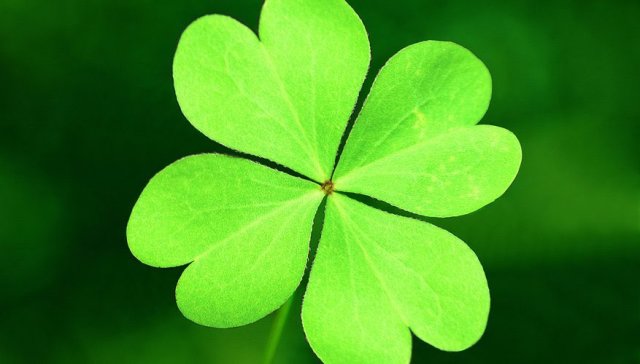The four-leaf clover is a rare variation of the common three-leaf clover. According to traditional superstition, such clovers bring good luck, though it is not clear when or how this superstition began. The earliest mention of "Fower-leafed or purple grasse" is from 1640 and simply says that it was kept in gardens because it was "good for the purples in children or others". A description from 1869 says that four-leaf clovers were "gathered at night-time during the full moon by sorceresses, who mixed it with vervain and other ingredients, while young girls in search of a token of perfect happiness made quest of the plant by day."
The first reference to luck might be from an 11-year-old girl, who wrote in an 1877 letter to St. Nicholas Magazine, "Did the fairies ever whisper in your ear, that a four-leaf clover brought good luck to the finder?
It is claimed that there are approximately 10,000 three-leaf clovers for every four-leaf clover. However, an actual survey of over 5 million clovers found the real frequency to be closer to 5,000 to 1, twice the said probability.
Clovers can have more than four leaves. Five-leaf clovers are less commonly found naturally than four-leaf clovers; however, they, too, have been successfully cultivated. Some four-leaf clover collectors, particularly in Ireland, regard the five-leaf clover, known as a rose clover, as a particular prize. In exceptionally rare cases, clovers are able to grow with six leaves and more in nature. The most leaves ever found on a single clover stem (Trifolium repens L.) is 56 and was discovered by Shigeo Obara of Hanamaki City, Iwate, Japan, on 10 May 2009.

